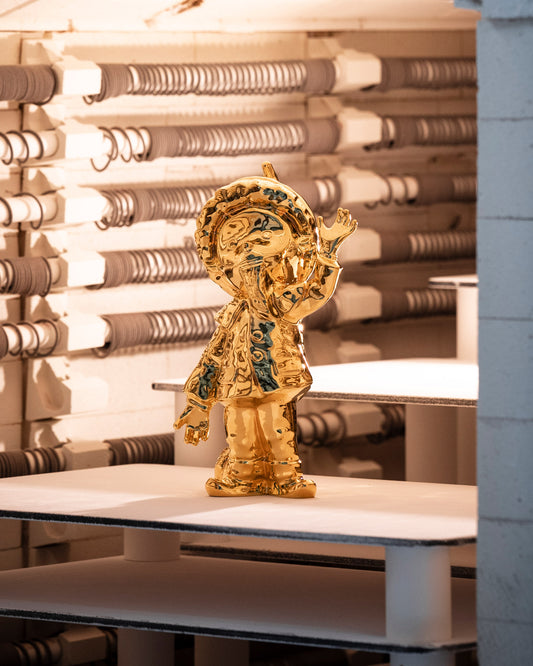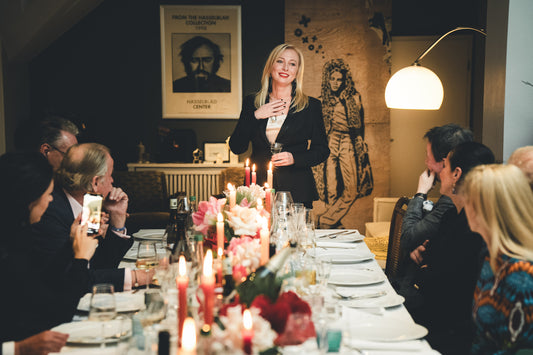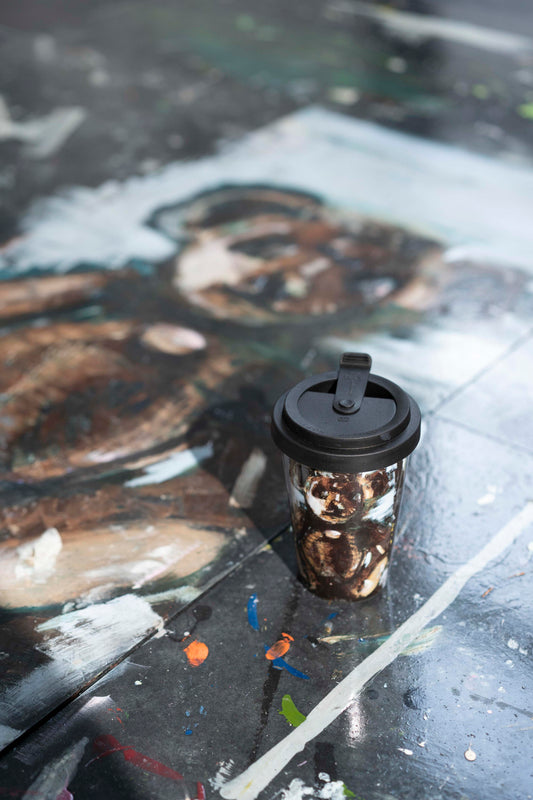INTERVIEW WITH TIM GRONERT – AUTHOR OF “PORZELLAN DER KPM BERLIN 1918 -1988”
In his three-volume work "Porcelain of the KPM Berlin 1918–1988", which has just been published by Deutscher Kunstverlag after more than ten years of research work, author Tim D. Gronert dedicates himself to modern Berlin porcelain production in the seventy years between 1918 and 1988, when the KPM was officially "State Porcelain". “Manufaktur Berlin” was called. He told us in an interview what inspired him to create this work, what insights he found particularly exciting and much more...
What inspired you to write your extensive, three-volume work?
The inspiration for the scientific study of the topic “The CPM in the 20th century” was, on the one hand, the company's own collection, which is presented in detail in the two catalog volumes. My parents practically gave me a love for modern Berlin porcelain. I began expanding the collection early on, so that it is now the largest of its kind in the world. Furthermore, it was particularly important to me to bring the artists who designed for the manufactory in the seventy years between 1918 and 1988 back into the public eye from the shadows of the past. Their artistic peculiarities and their, the turmoil of the The often bumpy lives of the 20th century deserve an in-depth study that art historiography has largely not yet done.
What fascinates you about KPM Berlin, its history, its artists and works?
With regard to the products of the Royal Porcelain Manufactory Berlin, even after years of detailed study, I am still fascinated by the sheer endless diversity of the art and everyday porcelain produced. This applies to both the constantly evolving model design and the diverse decor designs.
Is there a finding in your more than ten years of research on KPM Berlin that you found particularly exciting?
While working on my book, I made countless new discoveries: be it in relation to the authorship of individual models or decors or in the biographies of the artists involved. These were real aha moments when, for example, I came across the fact that Edith Alberti, who designed for the KPM in the 1920s - about whom little more than her name was known until then - continued after her marriage until the 1970s worked as an antiques dealer in Berlin and was also known to my father.
Do you have a favorite object in your porcelain collection?
My favorite object is always the most recently purchased one because there is still a lot to discover and describe.
In your opinion, how does the Berlin porcelain factory differ from today's privately run company in the period you have outlined?
Even during the times of the Prussian kings and the German emperors, the Berlin porcelain factory was always a model company for the state. This role model for private porcelain production, intended and proudly accepted due to tradition and statute (State Porcelain Manufactory), continued to apply despite various difficulties in the interwar years and into the 1960s, before artistic development steadily declined. The change in society and culture was accompanied by the almost complete neglect of the manufactory's cultural heritage. The transition to the private sector can of course bring with it completely new artistic freedoms, although the traditional heritage must always remain a large part of the company identity.
You described the biographies of the individual artists in detail in the third volume. Is there a person among you to whom you feel particularly connected?
Over the course of my many years of research on over eighty artists, some have grown particularly close to my heart. This doesn't always just have to do with the artistic oeuvre; biographical circumstances often led me to develop special sympathy for a particular person. For family reasons, I was particularly fond of the difficult fates caused by Nazi barbarism, which ranged from fear of existence due to a professional ban to life-threatening persecution and exile to suicide due to fear of impending annihilation.
If you could decide which porcelain object from your collection should be reissued at KPM Berlin - what would you choose?
In my opinion, an innovative manufacturer would do well to develop new, time-typical products themselves, ideally in a synthesis of form and decor. Therefore, I see the temptation to seek inspiration from designers and artists from past eras for today's production, and my work certainly contains numerous rediscoveries that have lost none of their fascination in the 21st century. However, I can only advise the KPM not to dwell too much on the past, but rather to look forward, open to external influences, and to release new porcelain typical of the time.


